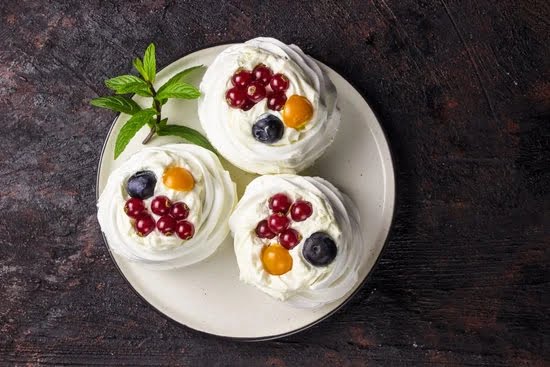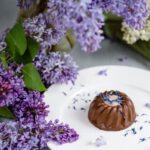Wilton cake flower decorations are not only a stunning addition to any cake, but they also showcase the true beauty and artistry that can be achieved with cake decorating. From delicate roses to vibrant daisies, Wilton techniques allow bakers of all skill levels to create lifelike floral arrangements that are sure to impress.
In this article, we will dive into the world of Wilton cake flower decorations and explore the step-by-step process of how to create these breathtaking designs. Whether you’re a professional baker looking to expand your repertoire or a beginner eager to learn a new skill, this guide will provide you with all the essential information you need.
Before we get into the nitty-gritty details of creating Wilton cake flower decorations, it’s important to familiarize yourself with the necessary tools and materials. From flower formers and petal cutters to gum paste and fondant, having the right supplies is crucial for achieving professional-looking results. In the next section, we will provide a comprehensive list of everything you’ll need for this artistic endeavor.
So, whether you’re preparing for a wedding, birthday party, or any other special occasion that calls for an extraordinary cake, join us as we embark on this journey into the world of Wilton cake flower decorations. Get ready to unleash your creativity and bring your cakes to life with stunning floral masterpieces.
Essential Tools and Materials
To create beautiful Wilton cake flower decorations, you will need a variety of tools and materials. Here is a comprehensive list of the essential items you will need to bring your floral creations to life:
Flower Shaping Tools
- Flower formers: These specially designed foam pads or cups help shape and dry the petals.
- Ball tool: This tool is used to thin and shape the edges of the petals.
- Veining tool: Used for adding realistic vein patterns on petals and leaves.
- Flower impression mats: These mats are available in various textures and designs to add texture to your flower petals.
Fondant and Gum Paste
- Gum paste: A pliable icing that dries firm, making it ideal for creating delicate flower petals.
- Fondant: A soft sugar dough that can be rolled out and molded into various shapes.
Cutters
- Petal cutters: These come in different sizes and shapes for creating different types of flowers like roses, daisies, lilies, etc.
- Leaf cutters: To create lifelike gum paste leaves.
Rolling Pins
- Non-stick rolling pin: Used to roll out fondant or gum paste to an even thickness.
- Small rolling pin with grooves: Ideal for adding texture to flower centers or petal edges.
Brushes
- Soft bristle brushes: Used for dusting edible petal dust onto the flowers.
- Paintbrushes: For applying water or edible glue onto fondant or gum paste pieces during assembly.
Edible Adhesives
- Edible glue: Used to attach different parts of the flower together.
- Water: Can act as an edible adhesive when needed.
Edible Decorations
- Edible petal dust: Adds color and depth to flower petals.
- Edible glitter: Gives a touch of sparkle and glamour to your floral decorations.
- Edible pearls or dragees: Used for additional decoration and elegance.
Storage and Transport
- Cake boxes or carriers: To safely store and transport your finished cake.
Having these essential tools and materials on hand will enable you to confidently start creating Wilton cake flower decorations. Preparing the cake surfaces, choosing flower designs, shaping and assembling the petals, adding leaves and stems, applying finishing touches, and troubleshooting common issues will all be made easier with these necessary tools at your disposal. Get ready to impress your friends and family with stunning floral creations atop your delicious cakes.
Preparing the Cake
Preparing the cake is a crucial step in creating Wilton cake flower decorations. Properly preparing the cake ensures that it will provide a sturdy and level foundation for the floral design. This section will outline the necessary steps to level, fill, and crumb coat the cake before proceeding with the flower decorations.
Leveling the Cake
The first step in preparing the cake is to level it. Leveling ensures that the cake layers are even and flat, providing a stable base for the flower decorations. To level the cake, use a long serrated knife or a cake leveler to carefully remove any domed or uneven portions from the top of each layer.
Filling the Cake
Once the cake layers are leveled, it’s time to add filling between them. The filling not only adds flavor but also enhances the overall appearance of the cake. Choose a filling that complements your chosen flower design. Spread an even layer of filling on top of one layer and place another layer on top, gently pressing down to secure it. Repeat this process if your cake has more than two layers.
Crumb Coating
After filling the cake, it’s essential to apply a crumb coat. A crumb coat is a thin layer of icing that seals in any loose crumbs and provides a smooth surface for decorating later on. Start by applying a thin layer of icing over the entire cake using an offset spatula or a palette knife.
Use gentle strokes to avoid picking up any loose crumbs as you go along. Once you’ve applied the crumb coat, refrigerate or freeze the cake briefly until it hardens, usually about 15-20 minutes.
By properly leveling, filling, and crumb coating your cake, you set yourself up for success when adding Wilton flower decorations later on. These steps ensure stability and provide a smooth canvas for showcasing your floral arrangements. With a well-prepared cake, you can now move on to the exciting step of choosing the right flower designs to adorn your creation.
Choosing the Right Flower Designs
When it comes to Wilton cake flower decorations, there is a wide variety of flower designs to choose from. Each flower design adds its own unique beauty and charm to the cake, allowing you to create stunning floral arrangements that suit any occasion. Whether you’re looking to make a romantic rose bouquet, vibrant daisy accents, or delicate lily blossoms, Wilton techniques can help bring your vision to life.
Roses are one of the most popular flower designs in Wilton cake decorating. They are known for their elegance and romantic appeal. Wilton offers various techniques to create realistic roses, including piping individual petals and shaping them into a blooming rosebud. By adding layers of petals and carefully arranging them, you can create a stunning floral display that will impress your guests.
Daisies are another versatile flower design that adds a pop of color and liveliness to any cake. With Wilton techniques, you can create daisies in different sizes and colors, making them perfect for both large cakes and cupcakes. By using a combination of piping and molding techniques, you can achieve realistic daisy petals with beautiful centers.
Lilies are known for their graceful appearance and delicate petals. With Wilton’s guidance, you can create lifelike lilies that will add an elegant touch to your cake decorations. Using petal cutters and veiners, as well as careful shaping techniques, you can achieve the intricate texture and shape of lily petals.
In addition to roses, daisies, and lilies, there are many other flower designs available with Wilton cake decorating techniques. From sunflowers and orchids to hydrangeas and tulips, the possibilities are endless. Wilton provides step-by-step instructions for each flower design so that even beginners can create professional-looking floral arrangements on their cakes.
| Flower Design | Description |
|---|---|
| Roses | Elegant and romantic flowers that can be created with individual petals and layered arrangements. |
| Daisies | Vibrant and versatile flowers that can be made in different sizes and colors, perfect for adding a pop of color to any cake. |
| Lilies | Graceful and delicate flowers that can be achieved by using petal cutters, veiners, and careful shaping techniques. |
| Sunflowers | Bold and cheerful flowers that can be created with textured petals and a distinctive center. |
By exploring the various flower designs offered by Wilton cake decorating techniques, you can choose the ones that best suit your desired aesthetic. Whether you want to create an elegant bouquet of roses or a whimsical arrangement of daisies, Wilton’s step-by-step instructions will guide you through the process of bringing these beautiful flower designs to life on your cake.
Creating the Flower Petals
To create beautiful and realistic flower petals using Wilton techniques, there are a few key steps to follow. First, you’ll need to shape the petals. Start by rolling out your gum paste or fondant into a thin sheet using a rolling pin. Then, use petal cutters in the desired shape and size to cut out the petals.
Once you have your petals cut out, it’s time to add texture and detail. This is where veining tools come in handy. Use a veiner tool to gently press veins into the surface of each petal. This will give them a more realistic appearance and add depth. You can experiment with different veining patterns for various flower designs.
Adding texture is an optional but beautiful step that can take your flower petals to the next level. You can use tools such as ball tools or embossing mats to create texture on the edges of the petals or even on the entire surface. This can mimic the natural texture found on real flowers, making your cake decorations look even more lifelike.
After shaping, veining, and adding texture to your flower petals, it’s important to let them dry before assembling them onto your cake. This will help them hold their shape without collapsing or losing their intricate details. Place the petals on foam pads or flower formers so that they can maintain their natural curve while drying.
Creating delicate and realistic flower petals may require some practice and patience, but with time you’ll be able to master this technique and achieve professional-looking results with Wilton cake decorating methods. So grab your tools, get creative with different shapes and textures, and bring your cakes to life with stunning floral accents.
Assembling the Flowers
One of the most important steps in creating Wilton cake flower decorations is the assembly of the flower petals. This process brings all the individual petals together to form a stunning and lifelike floral arrangement on top of the cake. Here are some step-by-step instructions on how to assemble the flowers using Wilton techniques:
- Begin by selecting the desired number of flower petals for your design. Arrange them in a circular pattern with one petal as the center and the rest fanning out around it. Make sure to vary the sizes and shapes of the petals for a more natural look.
- Apply a small amount of gum paste adhesive or edible glue onto one side of a petal, using either a small brush or toothpick. This will help secure the petals together.
- Carefully place another petal on top of the adhesive, slightly overlapping it with the first petal. Gently press down to ensure they stick together.
- Repeat this process with each additional petal, layering them on top of each other and offsetting them slightly for a fuller effect.
- Once all the petals are assembled, gently press down on them to secure them firmly together and create a cohesive shape.
- To add dimension and depth to your flower, you can gently curve or shape some of the petals before assembling them. This will create a more realistic look when placed on top of the cake.
- Allow the assembled flowers to dry completely before adding them to your cake. This may take several hours or overnight, depending on the humidity in your environment.
Assembling flower petals requires precision and patience, but with practice, you can achieve stunning results that will impress everyone who sees your Wilton cake flower decorations.
| Flower Type | Color |
|---|---|
| Rose | Red, pink, white, yellow |
| Daisy | White, yellow, purple, orange |
| Lily | White, pink, orange, lavender |
Adding Leaves and Stems
Once you have created the beautiful flower petals using Wilton techniques, it’s time to add the finishing touches to your cake by incorporating lifelike leaves and stems. Adding leaves and stems not only helps to complete the overall look of the flower decorations but also adds an extra level of realism and depth.
Step 1: Choosing the Right Leaf Designs
When it comes to choosing leaf designs, Wilton offers a variety of options that can suit different flower types. You can opt for traditional shaped leaves or go for more whimsical designs depending on your preference and style. Some popular leaf designs include ivy leaves, fern leaves, or even simple teardrop-shaped leaves.
Step 2: Creating Lifelike Leaves
To create realistic-looking leaves, you will need a leaf-shaped cutter in the desired size. Roll out green fondant or gum paste to a thin, even thickness using a rolling pin. Press the leaf-shaped cutter firmly into the rolled-out paste and remove the excess. Use a veining tool or a toothpick to add veins onto each leaf by gently pressing lines into the surface.
Step 3: Attaching Leaves and Stems
To attach the leaves onto your cake, lightly brush each leaf with water or edible glue. Place them around the base of each flower or arrange them in clusters around the cake as desired. For added realism, you can gently curve or bend each leaf to give them dimension.
For creating lifelike stems, roll out green fondant or gum paste into long, thin strips using a rolling pin. Carefully wrap these strips around dowels or floral wire that have been cut down to a suitable length. Attach one end of each stem securely onto your cake using either a small amount of water or edible glue.
Remember to arrange the leaves and stems in a visually pleasing manner, ensuring they complement the flower decorations without overwhelming them. Take your time and experiment with different placements until you are satisfied with the overall look.
By following these simple steps and adding lifelike leaves and stems to your Wilton cake flower decorations, you can elevate the beauty and realism of your creation. The incorporation of these elements will make your cake truly stand out and impress your guests at any special occasion.
Finishing Touches
After carefully creating and assembling your Wilton cake flower decorations, it’s time to add those final touches that will truly elevate your creation. These finishing touches can take your cake to the next level of elegance and beauty. Here are some tips and tricks to consider when applying the finishing touches to your Wilton cake flower decorations.
One popular technique for enhancing the look of your flowers is dusting them with edible petal dust. This is a simple yet effective way to add depth and dimension to your floral arrangement. To do this, choose a color of petal dust that compliments or contrasts with the colors of your flowers.
Using a soft brush, lightly apply the petal dust onto the petals, focusing on the creases and edges where shadows would naturally form. This will create a realistic shading effect that brings your flowers to life.
Another option for adding sparkle and glamour to your Wilton cake flower decorations is by using edible glitter. Edible glitter comes in various colors and sizes, allowing you to choose one that best suits your design aesthetic. To apply it, simply sprinkle a small amount over the petals of your flowers or even on the leaves if desired. The glitter will catch the light and give your flowers an enchanting twinkle.
For those who want to achieve an extra touch of elegance, consider incorporating edible pearls into your Wilton cake flower decorations. Edible pearls are available in different sizes and colors, allowing you to customize them according to your design vision.
To attach them securely onto your cake, use either a small dot of icing or melted candy melts as adhesive. Carefully place each pearl onto its designated spot on the cake or flower petals, creating a glamorous accent that will definitely impress.
By paying attention to these final details, you can truly make your Wilton cake flower decorations stand out. Remember to choose the finishing touches that best suit your design concept and desired aesthetic. With some extra care and creativity, your cake will become a stunning masterpiece that will be admired by all who see it. So go ahead and let your creativity shine as you apply these tips and tricks to perfecting your Wilton cake flower decorations.
Troubleshooting Common Issues
During the process of creating Wilton cake flower decorations, it is common to encounter certain issues that can affect the final result. Fortunately, many of these problems have simple solutions that can be easily implemented. In this section, we will address some of the most common issues that may arise and provide you with solutions to overcome them.
One common problem that decorators may face when making Wilton cake flower decorations is the petals breaking or tearing. This can happen when handling delicate petals or applying too much pressure while shaping them. To prevent this issue, it is important to handle the petals gently and use a light touch when shaping them.
If a petal does break or tear, don’t worry. You can fix it by using a small amount of piping gel or royal icing to adhere the pieces back together.
Another issue that decorators may encounter is the flowers not sticking to the cake properly. This can be frustrating, especially after putting in so much effort into creating the flowers. To solve this problem, make sure to use a small brush dipped in water or edible glue to moisten the back of each flower before attaching it to the cake. Additionally, press gently but firmly on each flower to ensure it adheres well.
Lastly, air bubbles or gaps between petals can also present a challenge in Wilton cake flower decorations. These imperfections can detract from the overall beauty and realism of your floral arrangement. One way to remedy this issue is by using a ball tool to thin out and smooth any rough edges on your petals. You can also apply a small amount of royal icing between layers or petals to fill in any gaps.
By following these troubleshooting tips and techniques, you will be better equipped to handle any issues that may arise during your Wilton cake flower decoration journey. Remember, practice makes perfect, so don’t be discouraged if you encounter challenges along the way. With patience and perseverance, you will soon be able to create stunning and flawless Wilton cake flower decorations.
Conclusion
In conclusion, this article has provided a comprehensive guide to creating stunning Wilton cake flower decorations. We have explored the essential tools and materials needed, as well as the steps to prepare the cake for decoration. We also discussed various flower designs available with Wilton techniques, and provided step-by-step instructions on how to create realistic flower petals.
Furthermore, we delved into the process of assembling the petals together to create lifelike floral arrangements, and incorporating leaves and stems for added realism. We also offered tips and tricks for adding the final touches, such as edible petal dust or glitter, as well as troubleshooting common issues that may arise during the process.
With this newfound knowledge, readers can now confidently apply these techniques to create their own stunning Wilton cake flower decorations for any special occasion. Whether it’s a birthday party, wedding celebration, or anniversary gathering, these beautiful floral designs will surely impress guests and make any cake a centerpiece.
So go ahead and unleash your creativity. With practice and patience, you’ll be able to master the art of Wilton cake flower decorations in no time. And remember, don’t be afraid to experiment with different colors and flower combinations to truly make your creations unique. Happy decorating.
Frequently Asked Questions
How do you use Wilton cake decorating tips?
Wilton cake decorating tips are commonly used to add intricate designs and decorations to cakes. To use these tips, start by choosing the desired tip based on the design or pattern you want to create. Attach the tip securely to a piping bag by screwing it onto the coupler. Fill the bag with your desired frosting or icing, ensuring that it is adequately filled but not overfilled.
Hold the piping bag at a 45-degree angle above the cake surface and gently apply even pressure to achieve a steady flow of frosting. Use controlled movements, applying consistent pressure, to pipe out the desired design or pattern. Practice is key in mastering different techniques with these tips, so don’t be discouraged if it takes some time to achieve your desired results!
How to make flowers for cake decorations?
Making flowers for cake decorations can be a beautiful way to enhance your baked creations. One popular method involves using buttercream frosting and a flower nail set. Start by attaching a square of parchment paper onto a flower nail by using a dab of frosting as an adhesive. Next, choose a petal tip that matches the size and shape you desire for your flower petals.
Hold the piping bag at a 45-degree angle and create a small mound of icing in the center of the parchment paper square on top of the flower nail. Begin piping petals onto this mound by squeezing and releasing pressure on the piping bag while rotating the flower nail slowly. Add more layers of petals until you have achieved fullness and dimension for your flower. Once finished, carefully transfer your completed flower from the flower nail onto your cake.
How do you pipe flowers in Wilton?
Piping flowers using Wilton techniques involves using specific tips designed for different types of flowers such as roses, daisies, or tulips. First, select an appropriate flower tip based on the type of flower you wish to pipe (consulting Wilton’s guidebooks can provide helpful suggestions). Attach this tip securely onto a piping bag using a coupler. Fill the piping bag with your chosen frosting or icing, making sure it is adequately filled without overfilling.
Hold the piping bag at a 45-degree angle above your cake surface and apply even pressure to create the base of the flower, using circular motions to build up layers. Once the base is complete, switch to a smaller tip for more intricate details such as petals or stamens. Use controlled movements and varying pressures to achieve realistic-looking flowers. Practice different techniques, such as writing motions or zigzag patterns, and experiment with different colors to create unique floral designs.

Welcome to our cake decorating blog! My name is Destiny Flores, and I am the proud owner of a cake decorating business named Cake Karma. Our mission is to provide delicious, beautiful cakes for all occasions. We specialize in creating custom cakes that are tailored specifically to each customer’s individual needs and tastes.





